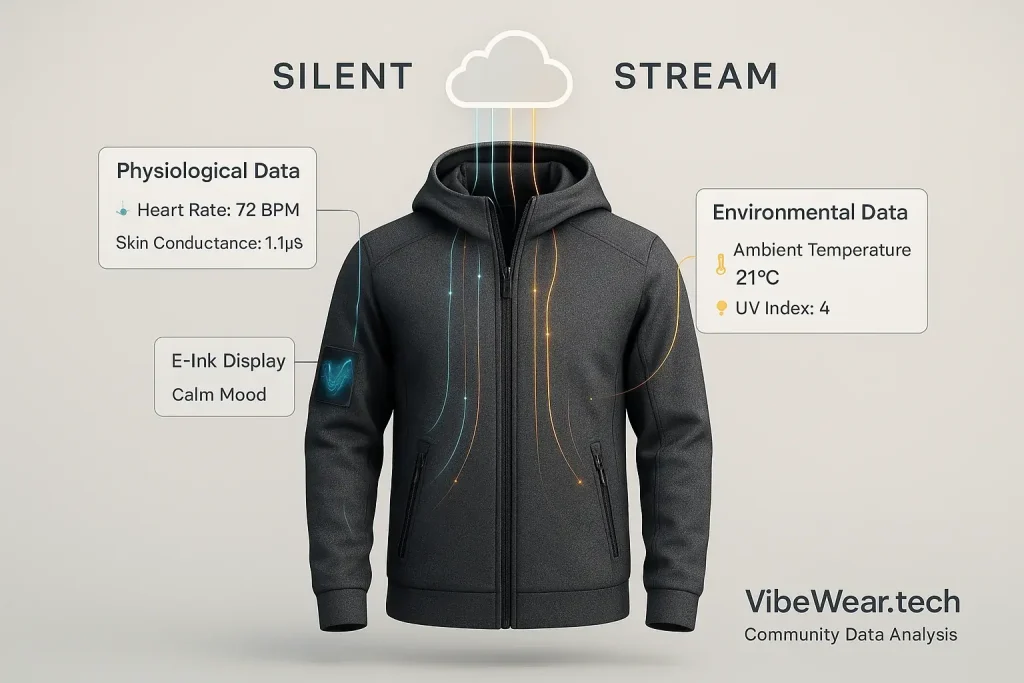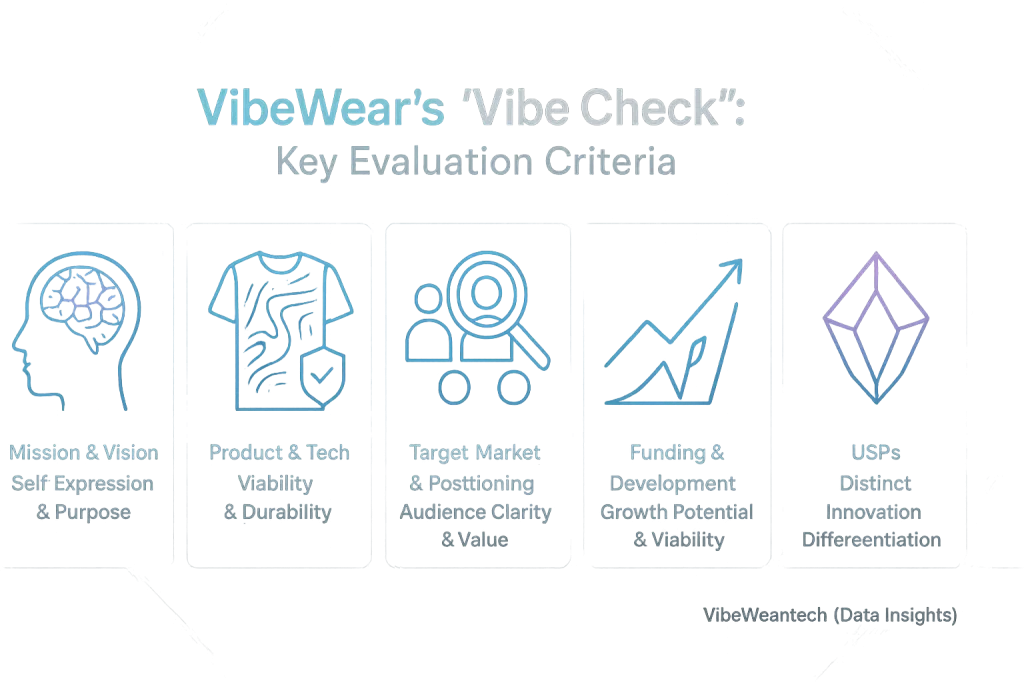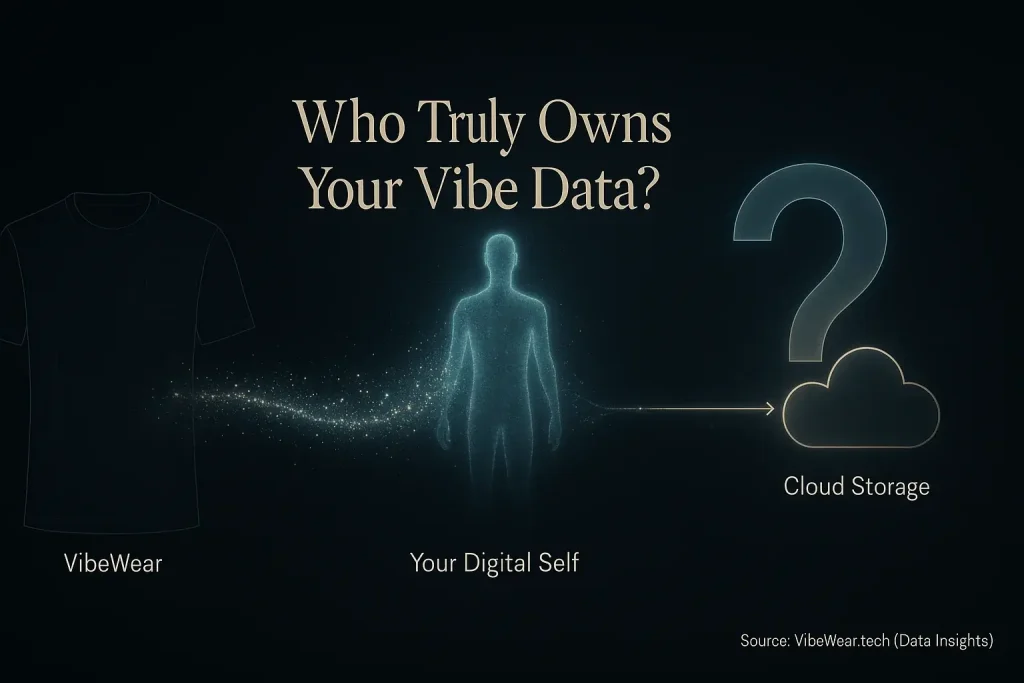Beyond the Obvious: Why Adaptive Fashion Matters for Accessibility
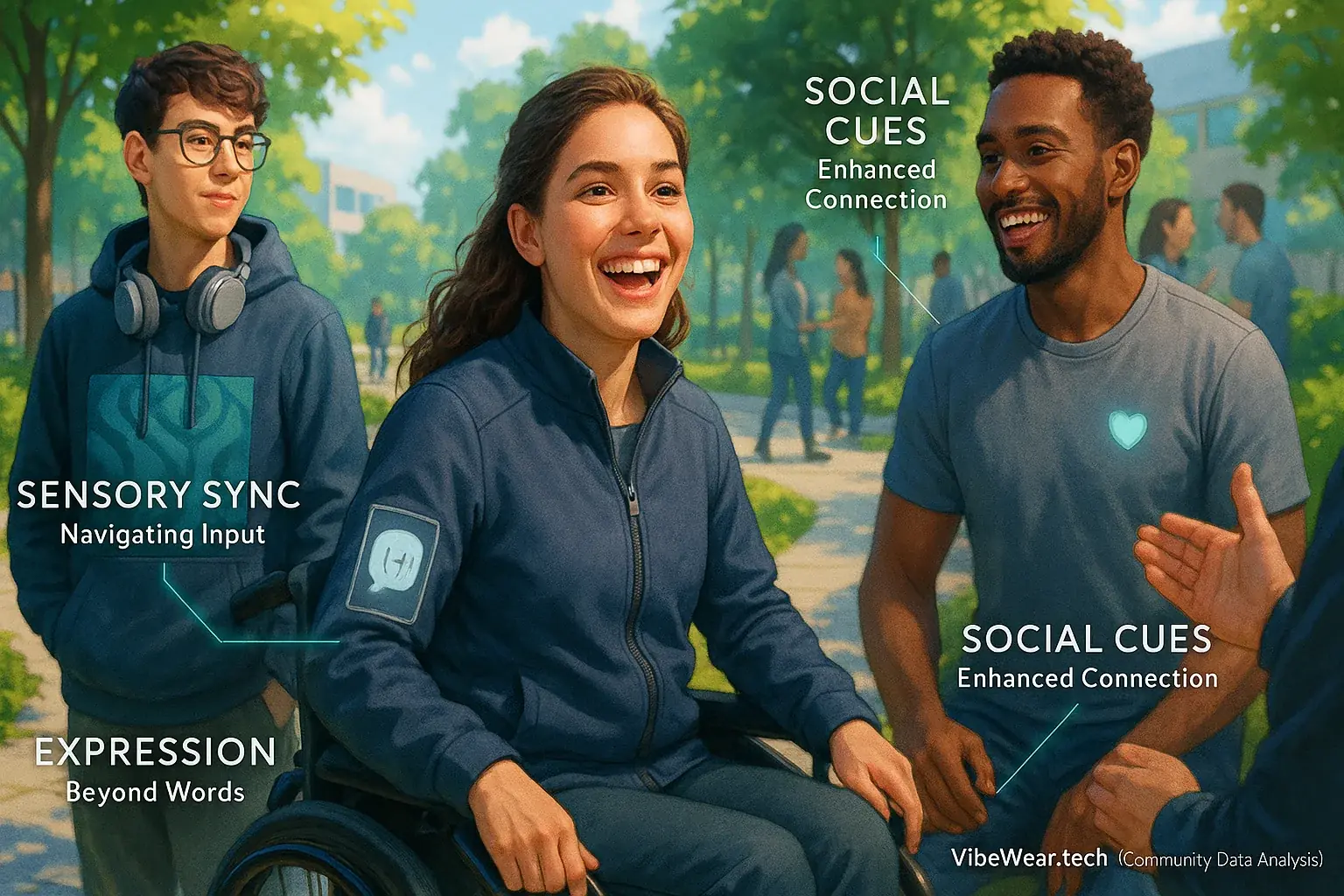
Can what you wear truly make a difference in how you experience the world, especially if you face daily challenges? Fashion holds immense power. Mood-adaptive techwear particularly offers this capability. This represents a new frontier for genuine inclusion.
VibeWear transcends mere style. It aims to empower individuals with disabilities. Imagine clothing helping navigate social cues, manage sensory input, or express what words cannot. VibeWear's analysis suggests this is not a fix, but a powerful new tool.
Our exploration delves into this significant capability. VibeWear analyzes how mood-adaptive e-ink streetwear can genuinely improve lives. This includes for people with communication difficulties or sensory processing disorders. VibeWear offers thoughtful resources. We unpack this technology's capacity for genuine, positive change.
A New Voice: VibeWear as a Non-Verbal Communication Tool
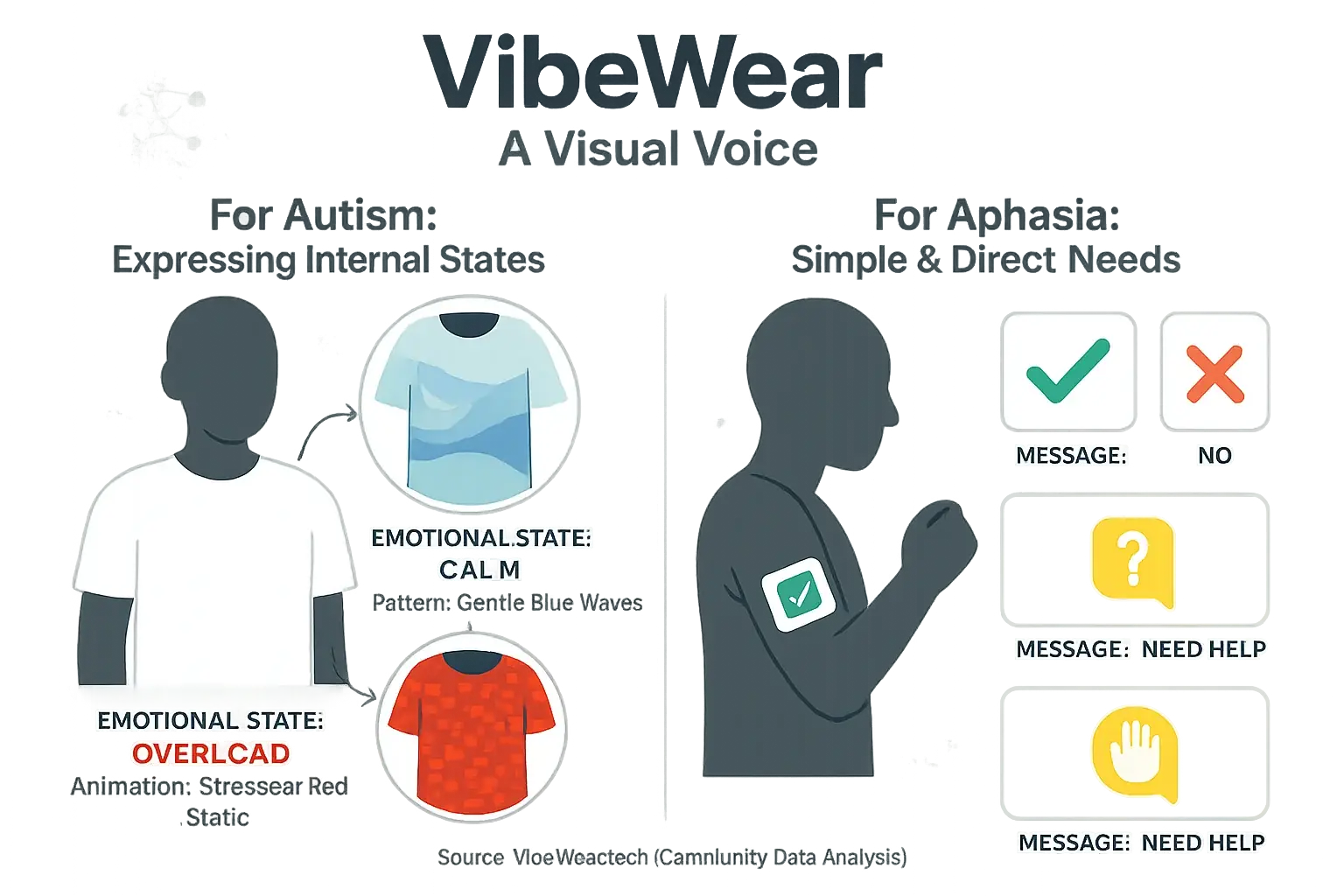
Imagine struggling to convey how you feel, or what you need, when words just won't come. For individuals with conditions like autism or aphasia, this challenge is constant. VibeWear offers a dynamic visual language. This technology offers a new voice.
For someone with autism, a VibeWear garment can speak volumes. A shirt subtly shifting from a 'calm blue' pattern to a 'stressed red' animation signals sensory overload. Caregivers understand this instantly. No single word is needed. This visual communication helps prevent meltdowns. It also fosters understanding. The wearer gains powerful, silent agency.
Similarly, VibeWear assists individuals with aphasia. Pre-programmed patterns can represent simple needs or responses. A quick garment tap might display a clear 'Yes' or 'No' symbol. Another could show a 'Need help' icon. Daily interactions become smoother. Frustration lessens. The unspoken truth? Sheer relief. This technology offers real comfort, not just for the wearer. Loved ones gain a clearer window into their internal world, fostering deeper connection.
This visual communication enhances social interactions. It reduces barriers. Understanding grows between people. For wearers, feelings of isolation may decrease. They can participate more. Connection deepens.
Finding Your Calm: VibeWear for Sensory Regulation & Personalized Comfort

The world often feels loud. Bright. Chaotic. Sensory overload presents a real, exhausting challenge for many individuals with Sensory Processing Disorder or heightened anxiety. VibeWear emerges as a personal sensory shield. This adaptive e-ink streetwear offers a new layer of control over your immediate sensory environment. It helps you manage overwhelming input, discreetly, fostering Anxiety Management.
Consider your VibeWear. It can display calming patterns for Sensory Regulation. Imagine your shirt subtly shifting to a soft, repetitive visual when biosensors detect a rising heart rate. This visual anchor helps you re-center. A dynamic e-ink display can also provide gentle, stimulating visuals during under-stimulation, aiding focus. Users could find a quiet focus. A moment of personal peace, a step toward Personalized Comfort.
VibeWear could offer more. Future VibeWear might integrate subtle haptic feedback. Temperature regulation could also respond to your body's signals, creating a personalized comfort zone through Biofeedback integration. This biofeedback loop empowers users to actively manage their anxiety or sensory needs, reducing stress. The real magic? It is not about hiding. It is about giving back control. VibeWear research indicates individuals find immense relief having a discreet, personal tool to manage their internal state publicly.
This technology can mean less reliance on other coping tools. VibeWear supports greater independence in managing sensory input. It fosters self-regulation. Discreetly. Effectively. This empowers individuals seeking personalized sensory experiences in their daily lives.
Designing for All: The Path to Truly Inclusive Adaptive Fashion
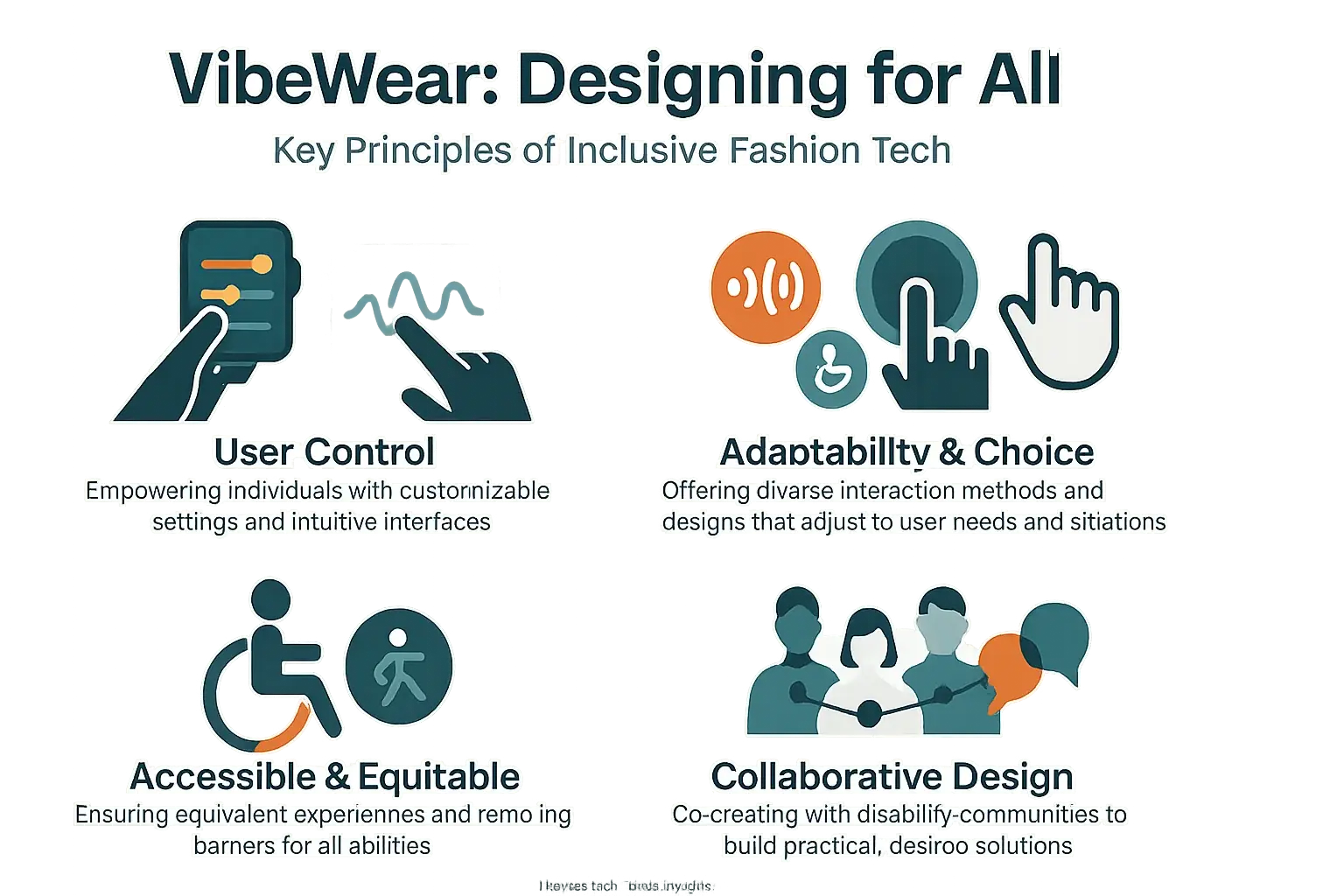
Inclusive design is foundational for VibeWear. Mood-adaptive clothing must empower everyone, not just a select few. New technologies, unchecked, can erect fresh barriers. An unspoken truth. This deepens digital divides, a challenge designers must confront.
Prioritizing user control defines inclusive VibeWear. Intuitive interfaces and robust, durable solutions become core design tenets, born from empathy. Imagine this: an app needing fine motor skills excludes many. Inclusive design offers choices like voice commands or larger tactile buttons, enhancing accessibility.
True inclusivity cannot thrive in isolation. VibeWear designers must actively engage with disability communities. Listening to their needs and integrating feedback from initial concepts is crucial. This collaboration builds practical, desired solutions, moving far beyond mere assumptions.
Inclusive design offers VibeWear more than compliance. It builds wider market appeal. It establishes ethical leadership in fashion tech. Designing for all brings benefits to all. This path fosters true innovation.

